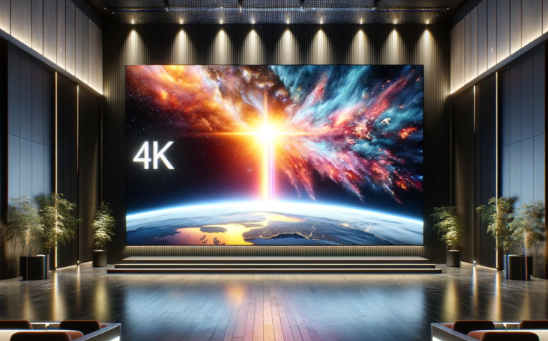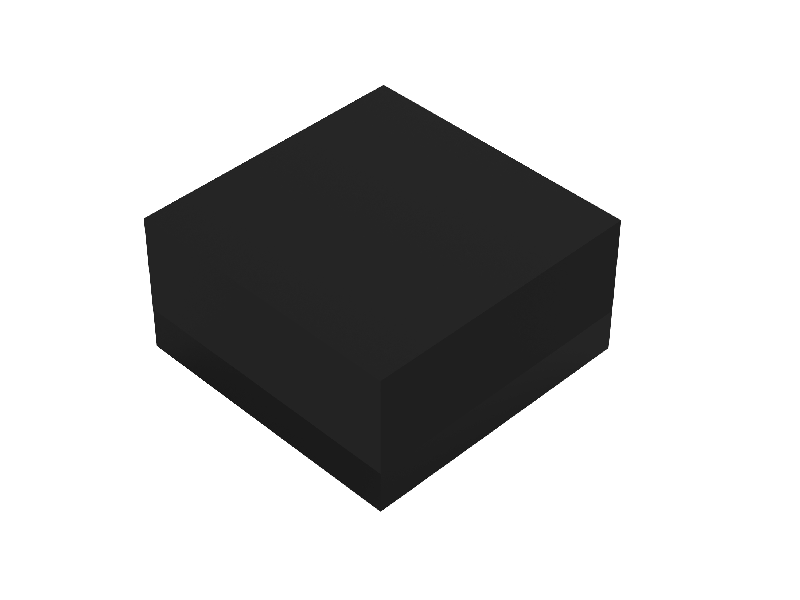As LED display technology continues to evolve, UHD LED displays emerge in recent years and are used for high end application scenarios which require higher resolution than full HD displays. UHD LED displays provide much richer details, better color rendering, and higher contrast ratio than other types of lower resolution LED displays, but cost much higher. If you’re going to invest a UHD LED display, then you should proceed to the following paragraphs and get a basic understand of everything concerning UHD LED displays.

A UHD LED display refers to an Ultra-High-Definition LED display, which is a type of display technology that provides extremely high resolution and image quality. UHD LED display is also commonly referred to as 4K LED display, offering four times the pixel density of a Full HD (1080p) display.
UHD LED display offers not only ultra high definition but also other advanced features than other lower resolution LED displays.
UHD LED displays have a resolution of 3840 x 2160 pixels, resulting in a total of over 8 million pixels on the screen. This increased pixel density allows for highly detailed and sharp images, delivering a superior visual experience.
UHD LED displays offer exceptional image clarity and detail due to the high pixel density. The fine pixel pitch ensures that individual pixels are less visible, resulting in smoother lines, sharper text, and vibrant visuals.
UHD LED displays typically have a wide color gamut and high color accuracy, allowing for accurate and vivid color reproduction. This feature ensures that images and videos appear vibrant and lifelike, enhancing the overall visual impact.
UHD LED displays often have high contrast ratios and brightness levels, enabling them to display deep blacks and bright whites. This contrast ratio enhances the overall image quality and contributes to a more immersive viewing experience.
UHD LED displays generally offer wide viewing angles, ensuring that the content remains clear and consistent even when viewed from different positions. This feature is especially important in large-scale displays or applications where viewers may be positioned at various angles.
High dynamic contents flickers while being displayed on lower resolution LED displays. But flickering won’t happen on a UHD LED display.
UHD LED displays can be scaled to various sizes, making them suitable for a wide range of applications. From smaller indoor displays to large outdoor billboards, UHD LED technology allows for flexibility in creating visually stunning and impactful displays.
UHD LED displays are commonly used in a variety of applications, including digital signage, advertising displays, conference rooms, control rooms, retail displays, sports stadiums, and home entertainment systems. Their high resolution and image quality make them ideal for situations where visual clarity and impact are crucial.
UHD LED displays have become increasingly popular due to their superior image quality and immersive viewing experience. They offer a remarkable level of detail and clarity, making them well-suited for applications where visual excellence is a priority.

Kinglight offers various mini and micro LEDs for small pitch LED displays
While UHD LED displays offer numerous advanced features, there are also a few potential disadvantages you should consider before investing on a UHD LED display.
UHD LED displays tend to be more expensive compared to lower resolution displays. The higher pixel density and advanced technology involved in manufacturing UHD displays contribute to their higher price point. This can make them less affordable for some budgets, particularly for large-scale installations or projects requiring multiple displays.
While UHD content is becoming more prevalent, it is still not as widely available as content in lower resolutions, such as Full HD. Not all media, such as TV shows, movies, or online videos, may be readily available in UHD format. This can limit the availability of native UHD content and require upscaling or conversion of lower resolution content, which may affect the overall image quality.
UHD content requires a significant amount of bandwidth to stream or download, and it occupies more storage space compared to lower resolution content. This can be a challenge for streaming services, content providers, or users with limited internet bandwidth or storage capacity.
UHD LED displays often require more powerful hardware to support the high-resolution content. This means that devices such as media players, graphics cards, or processors need to be capable of handling the increased processing power required to drive UHD displays. Upgrading or investing in compatible hardware may be necessary, especially for older systems.
Due to the high pixel density of UHD displays, the difference in visual quality between UHD and lower resolution displays may not be as noticeable when viewed from a distance. In some cases, the benefits of UHD may be more apparent when the display is viewed up close, which may limit the impact in certain applications where viewers are typically located at a distance.
UHD LED displays generally require more power to operate due to the higher number of pixels and the increased brightness levels required for optimal image quality. This higher power consumption can result in increased energy costs, especially for large-scale installations or long-duration usage.
It’s important to consider these potential disadvantages alongside the benefits when evaluating the suitability of UHD LED displays for a particular application or budget. Assessing the specific needs, content availability, and cost considerations will help determine whether the advantages of UHD outweigh the potential drawbacks in a given context.